A group of tier one contractors and trade associations has come together to warn they may not be able to give assurances that passive fire protection components in designs comply with new building safety regulations. Do we need a whole new approach?
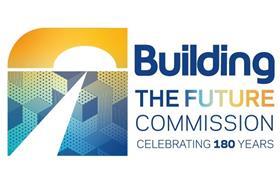
To the tier one contractors among you ŌĆō how confident are you that, when you inherit designs for a building, you can give technical assurance that all passive fire components meet building and fire safety regulations?
In around six monthsŌĆÖ time, it is expected that gateway two of the landmark ║├╔½Ž╚╔·TV Safety Act will come into effect.
This ŌĆ£hard stopŌĆØ, which replaces the building control deposit of plans stage, requires clients to gain approval from the new ║├╔½Ž╚╔·TV Safety Regulator before construction can begin. Clients, helped by dutyholders including the principal contractor, must satisfy the BSR that the design will meet building safety regulations.
The principal contractor must be able to provide technical assurance that the designs are correct before work can begin on the project. But among some of the largest contractors in the industry there is concern that providing this assurance would often prove tricky because of issues inherited from the design stage, where different components may not be compatible with each other.

ŌĆ£We are inheriting so many problems that weŌĆÖre just going to be blindly walking into a situation where we canŌĆÖt technically assure at gateway two,ŌĆØ warns Will Pitt, technical leader at Laing OŌĆÖRourke.
A group of 10 major contractors are so concerned about this that they have come together to form the Passive Fire Knowledge Group (PFKG) ŌĆō see box below) along with trade bodies the Association for Specialist Fire Protection (ASFP), ║├╔½Ž╚╔·TV & Engineering Services Association, Finishes and Interiors Sector and consultancy ADDC.
Passive Fire Knowledge Group members
- ADDC (Consultant)
- Association for Specialist Fire Protection (Trade Association)
- Balfour Beatty
- ║├╔½Ž╚╔·TV & Engineering Services Association (BESA ŌĆō Trade Association)
- Finishes and Interiors Sector (Trade Association)
- Laing OŌĆÖRourke
- Kier Construction
- Mace
- Multiplex
- Sir Robert McAlpine
- Skanska
- Vinci
- Wates Group
- Willmott Dixon
So, what exactly is the issue the group wants to tackle?
Pitt says: ŌĆ£The problems we are finding can be traced back to the early design stages, where architects and engineers work together but are often not aware of the spatial implications that affect how we are able to demonstrate compliance or install compliant solutions.ŌĆØ
As a simple example, he says it is no longer acceptable to ŌĆ£blindly select a fire damper and install it and hope for the bestŌĆØ.
He says: ŌĆ£YouŌĆÖve got to be able to demonstrate that particular fire damper will achieve a certain rating, and that will have been tested in the certain type of wall. You canŌĆÖt specify a damper without specifying the wall system ŌĆō and they are done by different people.ŌĆØ
He adds: ŌĆ£WeŌĆÖve got projects at the moment where the architect has specified 14 different types of dry wall system ŌĆō you are never going to have dampers that have been tested in [all] those walls, so from the get-go there is a compatibility problem.ŌĆØ
Simon Tolson, senior partner at Fenwick Elliott and a commissioner on ║├╔½Ž╚╔·TVŌĆÖs ║├╔½Ž╚╔·TV the Future Commission project to improve the built environment, recognises the problem.
YouŌĆÖve got to be able to demonstrate that particular fire damper will achieve a certain rating, and that will have been tested in the certain type of wall. You canŌĆÖt specify a damper without specifying the wall system and they are done by different peopleŌĆØ
Will Pitt, technical leader, Laing OŌĆÖRourke
He says contractors may face challenges in ensuring that passive fire components comply with regulations ŌĆ£due to the complexity of the systems and the need for close coordination among multiple stakeholders, including architects, engineers, specialist subbies and fire safety consultantsŌĆØ.
He says contractors inheriting partial designs at gateway two ŌĆ£cannot advance safely on assumed casesŌĆØ because passive fire protection systems ŌĆ£involve the use of multiple materials and components, which must be tested and certified to comply with regulationsŌĆØ. He stresses that this cannot be done in isolation.
For Pitt, we are entering a world where the construction industry will have to think about buildings as entire systems, with passive fire protection emerging as a new multidisciplinary role.
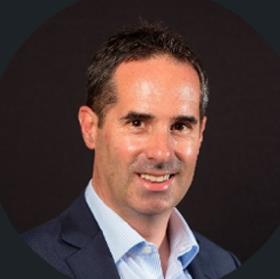
ŌĆ£The PFKG has come together because these problems canŌĆÖt be solved by one company on their own,ŌĆØ says Pitt. Tolson says he hopes that thinking of buildings as systems ŌĆ£is a given in 2023ŌĆØ.
Paul McSoley, sector design leader at Mace, who is leading the PFKG working group on competence, ownership and timing of design, says: ŌĆ£Everyone looks at passive fire in the same light when actually, if youŌĆÖve got duct pipes or a fire curtain, how theyŌĆÖre actually tested is completely different. They are not actually that relatable.
ŌĆ£They may run to the same temperatures and times on the tests but the way that they are put together for assurance purposes is completely different. So, if you canŌĆÖt get an assured system that has been tested to install it, you canŌĆÖt really do your quality control either.ŌĆØ
Under the ║├╔½Ž╚╔·TV Safety Act, dutyholders, including contractors, will be responsible for maintaining a golden thread of information about a building, and this too, may prove tricky.
Pitt says: ŌĆ£In my view, the golden thread of information is: can you prove that what is installed is installed in accordance with the design? And that the design is in accordance with the regulations? But we canŌĆÖt do this because a lot of the time we are inheriting designs that arenŌĆÖt tested or testable.ŌĆØ
So, what is it the PFKG is hoping to achieve?
The group has set up three working groups. One, led by McSoley, will look at process, including the competence, ownership and timing of design.
Another group is led by Andrew Taylor, technical officer at ASFP, and will focus on testing, including the lack of fire testing data on common applications such as shaft walls.
While a third, led by Niall Rowan, technical and regulatory affairs officer at ASFO, will look at ways to improve the education and competence of those designing, specifying, procuring and installing passive fire protection, including fire engineers and clients.
Tolson agrees that education is key and says the technical knowledge of many in the construction industry when it comes to the application of passive fire protection measures is ŌĆ£lamentableŌĆØ. He says courses should be developed to ensure those involved in designing, specifying, procuring and installing passive fire protection measures have the necessary skills, with minimum standards (see box).
MaceŌĆÖs McSoley says the PFKG may look at developing a code of practice for the industry for passive fire. ŌĆ£A code of practice would tell people how to behave around the management of the commissioning process for the job.ŌĆØ
Common challenges
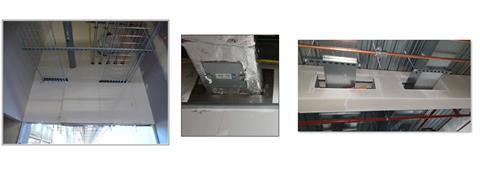
The Passive Fire Knowledge Group gives presentations showing illustrative examples of common problems inherited by contractors from the design stage.
These include, pictured from left to right:
- Penetrations not designed in accordance with dry line wall manufacturers requirements and other spacing issues.
- Fire dampers not installed within compatible dry-lined/flexible wall systems.
- Services passing through encapsulated beams on a compartment line. This is a problem as there is no test standard covering this issue.
Rebecca Rees, partner at Trowers & Hamlins and a ║├╔½Ž╚╔·TV the Future commissioner, agrees. She says a code of practice is more likely to achieve the systems-based approach needed than legislation (see box below).
She adds: ŌĆ£A code of practice ŌĆō which breaks down traditional communication flows ŌĆō is underpinned by collaborative procurement principles and allows all project team members to understand the part they need to play in the overall project- is likely to be much more effective in achieving safe and quality outcomes.ŌĆØ
However, Pitt stresses that for now the groupŌĆÖs aim is to raise awareness of the issues. ŌĆ£The first objective of the group is to start vocalising these problems, but a lot of the solutions donŌĆÖt lie in this group, they lie with manufacturers.ŌĆØ
However there is arguably a great deal that tier one contractors themselves need to get better at also. Tolson says collaboration and communication is key.
He says tier one contractors need to work closely with all those involved in the design and construction of passive fire protection measures to ensure components are specified and installed correctly. ŌĆ£They will need to invest in training and education programmes to ensure that personnel have the necessary knowledge and skills,ŌĆØ he says.
One senses that what the PFKG really wants to do initially is to kickstart a discussion about the problem. Eventually, by focusing on solutions based on collaboration, training, sharing information and perhaps recommending ways to improve testing and certification, the PFKG is hopeful the situation can be improved.
If it isnŌĆÖt, the big fear is that projects will be delayed and sent back to the drawing board at gateway two once it comes into effect later this year.
What the commissioners think
Simon Tolson

There are a variety of ways to improve passive fire testing and the education and competences of those involved in designing, specifying, procuring, and installing passive fire protection, including fire engineers. First a true understanding of the building envelope is required, then I see:
1. Standardisation of Testing Methods needs to happen: It is crucial to standardise testing methods for PFP systems to ensure that the test results are consistent and reliable. Achieved by following international standards such as the British Standard BS476: 1997, Part 7 (current BS EN 1634-1), ISO and American Society for Testing and Materials (ASTM) standards.
2. Continuous improvement of Fire Regs: Fire safety regulations must be continuously improved to keep up with new products and knowhow and changing building design and construction practices. This can be accomplished by regularly reviewing the regulations and updating them to incorporate new technologies and construction practices.
3. Education and Training: courses should be developed to ensure that those involved in designing, specifying, procuring, and installing PFP systems have the necessary knowledge and skills to do so effectively via the institutions, seminars, and workshops etc. Minimum standards such as say IFE Level 3 Diploma in Fire Science and Fire Safety, see .
4. Certification and Accreditation: such programs can be developed to ensure that those involved in PFP have the necessary qualifications and expertise. Establishing certification programs for fire engineers, contractors, and other professionals.
5. Collaboration and Communication: among all stakeholders involved in PFP design, specification, procurement, and installation can be focussed upon by likes of PFKG etc establishing communication channels among stakeholders by fostering collaboration among them.
Rebecca Rees
I agree with Simon and PFKG that the built environment sector does need to adapt and look at buildings as systems ŌĆō particularly in relation to passive fire protection.
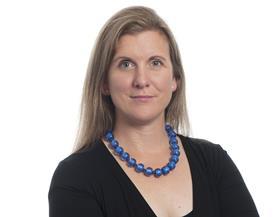
But isnŌĆÖt it more than incoming legislation and regulation? We already have Regulation 7 of the ║├╔½Ž╚╔·TV Regulations that obliges the project team to use ŌĆ£adequate and proper materials, that are appropriate for the circumstances, installed to perform the functions for which they are designed in a workmanlike mannerŌĆØ.
If the whole team (from the client to the specialist trades) adopt a new ŌĆ£systems-basedŌĆØ approach to how they view a building then that would transform the current, siloed, approach: it would encourage communication between the professions, the re-professionalisation of the client and the early engagement of the specialist supply-chain members.
It would also change the method of procurement: clients would see it as completely undesirable to structure a design and construction process that is carved up into a series of binary works packages: this blinkers each profession to the outcomes and performance of the design. Conversely, a systems-based approach facilitates a holistic, whole team approach to the required performance of both the individual components and the use of those components in the building as a whole.
Legislation is not going to achieve a systems-based approach. A code of practice (which breaks down traditional communication flows, is underpinned by collaborative procurement principles and allows all project team members to understand the part they need to play in the overall project) is likely to be much more effective in achieving safe and quality outcomes.
It is great that passive fire systems so starkly show the benefit of systems-based thinking, but really it is something that should develop to define the sector as a whole.
Andrew Melllor
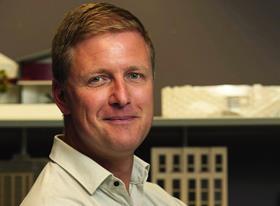
- It is often difficult to obtain the appropriate fire test evidence from manufacturers.
- Due to test methods and the manufacturersŌĆÖ reluctance to test all permutations, available test evidence may not match the proposed construction.
- Smaller design practices may not have the expertise/resource available to assess test certification properly.
- Many contractors do not have the expertise to a) check certification or b) verify that design proposals have included all that is required.
- BS476 is proposed to be replaced in ADB. This will result in some products not having the required test certificates until the test houses and manufacturers catch up.
- The contractors do at times change specified items due to lack of availability, costs, ignorance as to the importance of the specification being maintained etc.
║├╔½Ž╚╔·TV the Future Commission
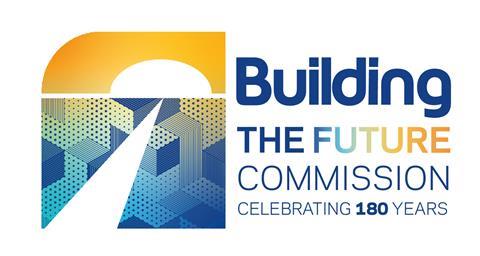
Coming up on the ║├╔½Ž╚╔·TV the Future commission:
In the coming weeks we will:
- Host our first regional roundtable with our partner Constructing Excellence in the East of England region in mid March
- Convene our first commissioner panel meeting in April
- Host the first roundtable discussion with the ║├╔½Ž╚╔·TV the Future Young PersonŌĆÖs Advisory Panel
- Look at the social value toolkit and its potential to help change the low-margin culture of construction
- Interview two big hitters for our housing and planning stream
- Display a selection of ideas on a new Ideas Hub page
- Look at the extent to which local authority planning departments have the skills to develop design codes for our skills and education stream
In the past few weeks we have
- Examined whether the qualifications landscape needs to change and assess whether more flexibility is needed for our education and skills stream
- Assessed a new model of procurement used by the Ministry of Defence for the project delivery and digital stream
- Looked at models of flexible working in the industry for the workplace, culture and leadership stream
- Looked at plans for one of the largest planned timber housing developments and lessons it could offer in how to secure community support for relatively high density schemes in the parts of the country that tend to oppose development for our net zero and housing and planning streams.
- Invited ideas for submissions on how to improve the built environment
About the commission
The ║├╔½Ž╚╔·TV the Future Commission is a year-long project, launched to mark ║├╔½Ž╚╔·TVŌĆÖs 180th anniversary, to assess potential solutions and radical new ways of thinking to improve the built environment.
The major projectŌĆÖs work will be guided by a panel of 19 major figures who have signed up to help guide the commissionŌĆÖs work culminatuing culminate in a report published at the end of the year.
The commissioner include figures from the world of contracting, housing development, architecture, policy-making, skills, design, place-making, infrastructure, consultancy and legal.
The commissioners include Lord Kerslake, former head of the civil service, Katy Dowding, executive vice president at Skanska, Richard Steer, chair of Gleeds, Lara Oyedele, president of the Chartered Institute of Housing, Mark Wild, former boss of Crossrail and chief executive of SGN and Simon Tolson, senior partner at Fenwick Elliott. See the full list here.
The project is looking at proposals for change in eight areas:
- Education and skills
- Housing and planning
- Infrastructure
- ║├╔½Ž╚╔·TV safety
- Project delivery and digital
- Workplace culture and leadership
- Creating communities
>> EditorŌĆÖs view: And now for something completely positive - our ║├╔½Ž╚╔·TV the Future Commission
>> Click here for more about the project and the commissioners
║├╔½Ž╚╔·TV the Future will also undertake a countrywide tour of roundtable discussions with experts around the regions as part of a consultation programme in partnership with the regional arms of industry body Constructing Excellence. It will also set up a young personŌĆÖs advisory panel.
We will also be setting up an ideas hub and we want to hear your views.


























No comments yet